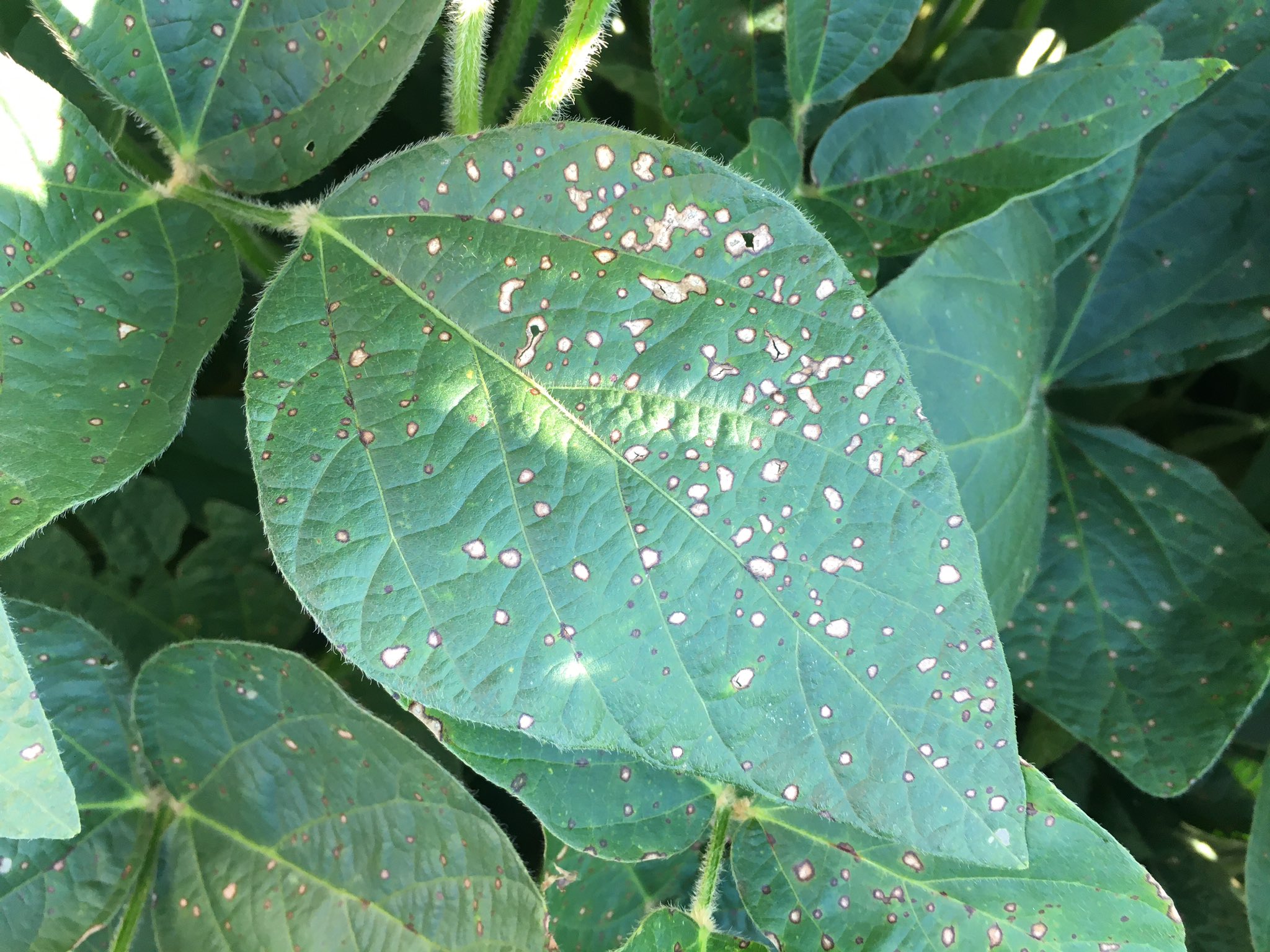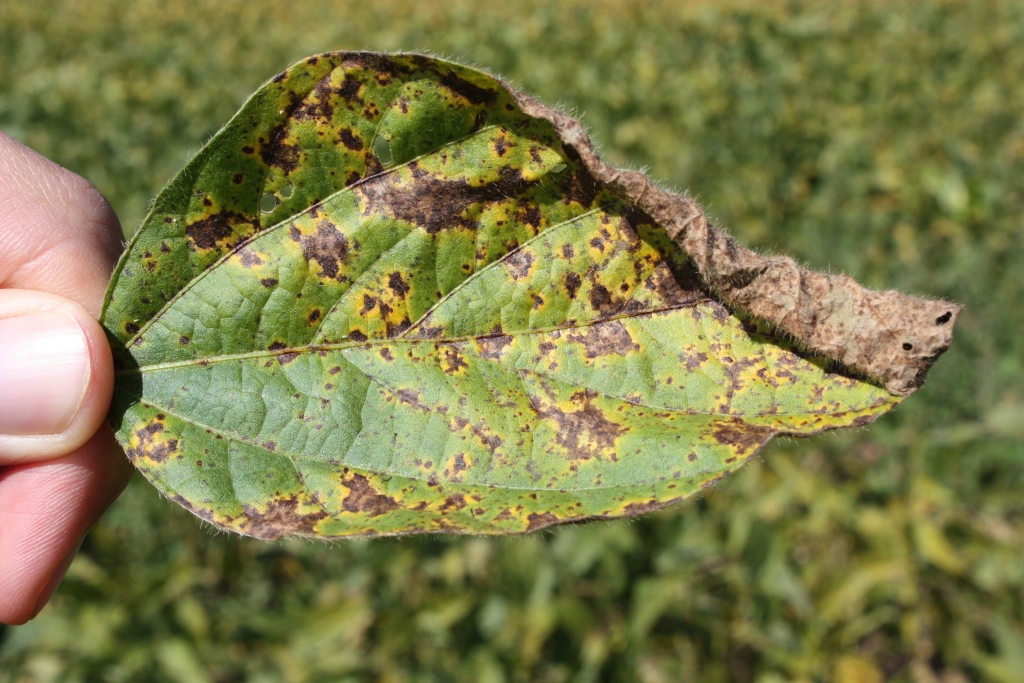Managing soybean diseases with foliar fungicide applications
The cool, wet weather increased interest in applying foliar fungicides to soybeans. Learn how to maximize fungicide performance and return on investment.

Should I spray for white mold?
Sporecaster, a relatively new phone app for predicting the risk for white mold apothecia (mushrooms) to develop, is showing medium to high risk depending on the location and other field-specific information. Risk for white mold apothecia development has been increasing with this continued cool and wet weather and many soybean producers are considering applying fungicides to manage the disease.

Michigan State University Extension has shown that foliar fungicide applications can be an effective and profitable management tactic provided the following conditions are met:
- Fields have a history of white mold.
- Current and future weather conditions favor white mold development (air temperatures below 85 degrees Fahrenheit and rainy or overcast).
- Fungicides are rated as good to very good for white mold. There are five fungicides rated as providing good to very good control of white mold when properly applied:
- Approach 2.08SC (good to very good, based on two applications – R1 and R3)
- Endura 0.7DF (very good)
- Lektivar 40SC (good)
- Omega 500DF (good)
- Propulse 3.34SC (good)
- Fungicides are applied at the optimum time. Many fields are in the late R2 growth stage (lots of blossoms throughout the plant but no pods on the upper four nodes having a fully expanded leaf on the main stem) to the early R3 growth stage (one pod 3/16-inch long on the upper four nodes having a fully expanded leaf on the main stem), so applications will need to be made soon.
- Sprayers are equipped and operated to maximize canopy penetration and plant coverage. Recommendations for equipping and operating sprayers for fungicide applications are available in the MSU Extension article, “Equipping and operating sprayers to control insects and diseases in soybeans.
What about spraying for other soybean foliar diseases?
In general, we don’t see a great deal of other foliar diseases. However, southern Michigan may warrant a fungicide application for frogeye leaf spot. Under heavy frogeye leaf spot conditions, we have seen a 20-bushel per acre protection over an untreated when sprayed at R3. However, this was a field that we had purposefully infected with frogeye and were irrigating to promote disease.

Occasionally, we will also see Septoria brown spot moving up the canopy. A fungicide application tends to be warranted when Septoria infected leaves are found halfway up the canopy.

Most often when not treating for a specific disease, fungicide applications result in a breakeven proposition, however there is variability from field to field. If you make the decision to spray, check strips should be included to learn and verify the decision.
View a soybean foliar fungicide efficacy chart from the Crop Protection Network.



 Print
Print Email
Email